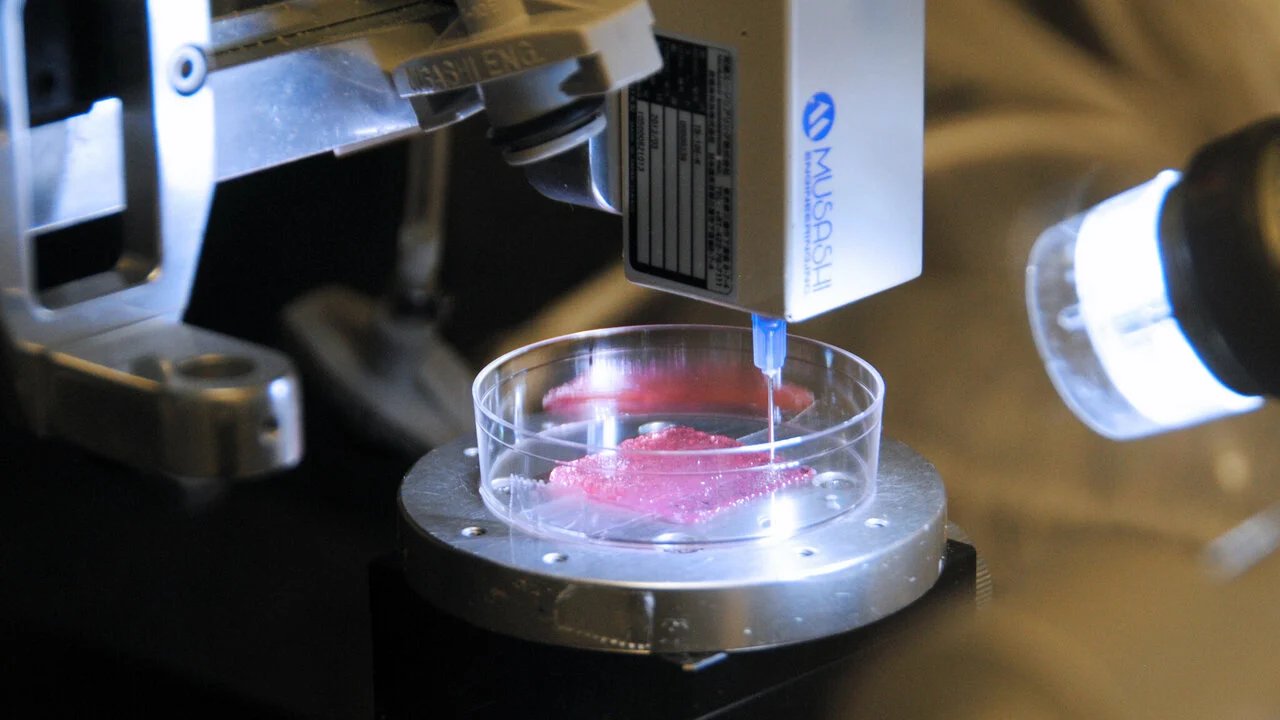NUS Researchers Harness AI and 3D Bioprinting to Personalise Gum Tissue Grafts
07 April 2025 | Monday | News

Image Source : Public Domain
AI-enabled workflow streamlines oral soft tissue fabrication, paving the way for personalised, less invasive dental treatments
A team of researchers from the National University of Singapore (NUS) has unveiled a transformative approach to regenerative dental care, combining artificial intelligence (AI) and 3D bioprinting to create personalised gingival (gum) tissue grafts. This breakthrough significantly reduces the time, cost, and resource burden of traditional dental grafting, while enhancing precision and patient comfort.
Led by Assistant Professor Gopu Sriram from the NUS Faculty of Dentistry, the research presents a game-changing alternative to conventional grafting methods, which typically involve painful and invasive harvesting of tissue from the patient’s mouth.
Published in Advanced Healthcare Materials on December 17, 2024, the study was supported by grants from the National Additive Manufacturing Innovation Cluster (NAMIC) and National University Health System (NUHS).
“This research demonstrates how AI and 3D bioprinting can converge to solve complex medical problems through precision medicine,” said Asst Prof Sriram. “By optimising tissue grafts for individual patients, we can reduce the invasiveness of dental procedures while ensuring better healing and recovery.”
AI-Driven Bioprinting: A New Frontier in Regenerative Dentistry
Gum grafting is vital for treating mucogingival defects like recession or damage due to periodontal disease and implants. However, current practices rely on donor tissue from the patient’s palate, which is limited and often leads to discomfort and complications.
To address these limitations, the NUS team developed a bio-ink that maintains structure and cell viability, then integrated AI to optimise bioprinting parameters — such as extrusion pressure, nozzle size, and temperature — reducing the typical thousands of test combinations to just 25.
“This AI-guided method greatly accelerates parameter optimisation in bioprinting,” said Professor Dean Ho, Head of Biomedical Engineering at NUS and co-corresponding author. “It not only enhances the efficiency of biofabrication but ensures consistent, high-quality outcomes tailored to each patient.”
The printed gum tissue grafts retained over 90% cell viability and exhibited biomimetic structure, mimicking natural gum with key proteins and a multilayered architecture. These features point to real-world clinical potential.
Beyond Dentistry: A Model for Future Tissue Engineering
The scarless healing properties of oral tissue provide a unique advantage, with the potential to inspire similar grafts for skin and other barrier tissues. Co-investigator Dr Jacob Chew, a periodontist and Academic Fellow at NUS Faculty of Dentistry, noted that personalised grafts minimise tension and distortion, potentially shortening surgery time and reducing post-operative complications.
Next Steps: From Lab to Clinic
The team’s next phase includes in vivo studies to evaluate how well the grafts integrate in oral environments and exploring multi-material bioprinting to incorporate vascular structures — a leap forward toward more functional and complex tissue grafts.
Most Read
- How Innovation Gaps in Biopharma Raise New Safety Concerns
- Smart Implants and the Future of Musculoskeletal Injury Treatment
- How Ethical Gaps in Psychiatry Could Undermine Biopharma Progress
- The Evolving Landscape of Women’s Health Innovation in the Asia-Pacific
- Using NLP-Driven Decision Support in Emergency Health Assistance
- Taiwan Steps Into the Global Spotlight With a New Cancer Therapy
- The Role of Unique Device Identification (UDI) in Tracing Medical Device Safety
- The Importance of a Patient’s Mental Health During Clinical Trials
Bio Jobs
- Avantor’s New CEO Ligner Aims to Unlock Global Potential and Deliver Shareholder Value
- AstraZeneca Commits $50 Billion to U.S. Expansion by 2030 in Biggest-Ever Global Investment
- Thermo Fisher, SAMRC, and South Africa’s Department of Science and Innovation Launch CATIR to Nurture Next-Gen Scientists
- Cube Biotech Appoints Former Sartorius CEO Dr. Joachim Kreuzburg to Board of Directors
- FDA’s AI Transition Marks a Turning Point in Drug Review: Industry Faces Pressure to Adapt Amid 20% Workforce Cut
- WuXi XDC Completes Mechanical Build of Singapore Bioconjugate Manufacturing Hub
News
Editor Picks











